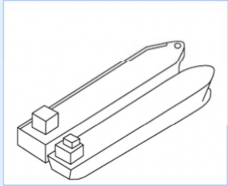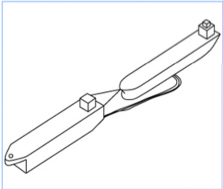

< Previous | Contents | Next >
Section 1 General
101. Application
1. The requirements of this Chapter apply to the followings:
(1) The Loading Systems on the floating LNG storage and regasification units(FSRU) for trans- porting liquefied gas to storage tank
(2) The Offloading Systems on floating liquefied gas production units(FLNG) for transporting lique- fied gas from storage tank to LNG carriers.
2. The definitions and boundary of loading system and offloading system are to comply with Ch 1,
202. 3. and 4.
102. Codes and standards
1. The requirements not specified in this Guidance are to be in accordance with recognized national or international standards.
2. The following standards may be adequately standards.
referred as recognized national or international
Standard No. | Standard Title |
OCIMF/SIGTTO | Ship to Ship Transfer Guide(Liquefied Gases) |
OCIMF/SIGTTO | Recommendations for Manifolds for Refrigerated Liquefied Gas |
EN 1474-1 | Installation and equipment for liquefied natural gas. Design and testing of marine transfer systems. Design and testing of transfer arms |
EN 1474-2 | Requirements for flexible hoses |
EN 1474-3 | Risk based qualification of offshore transfer systems |
103.
Loading and Offloading Type
1. Side-by side loading type is shown in Fig. shuttle carrier alongside the unit, temporarily
12.1. Side-by-side loading involves manoeuvring a mooring the two vessels together, separated by
fenders. Typical separation of the vessels is then the diameter of the fendering, generally approx-
imately 5 m.
2. Tandem loading type is shown in Fig. 12.2. LNG loading is with the shuttle carriers and the unit in a tandem. The vessels are connected by hawser line and transferred from bow of shuttle tanker to stern of unit. However flexible hose may be used and transferred from any part of the vessels. Tandem loading type can be used in more severe condition compared with side-by-side loading type.
104. Design considerations
The loading and offloading systems are to be designed to maintain its integrity under the most un- favorable combination of external loads and internal loads.
105. Classification survey during construction
Tests and surveys for loading systems and offloading systems are to be carried out in accordance
with the requirements in applicable. However, the
Pt 7, Ch5, Sec 5 of Rules for the Classification of Steel Ships as items which are not specified in Pt 7, Ch5, Sec 5 of Rules for the
![]()
Classification of Steel Ships are to be in accordance with standards specified in 102. 2.

Fig. 12.1 Side-by side loading type

Fig. 12.2 Tandem loading type